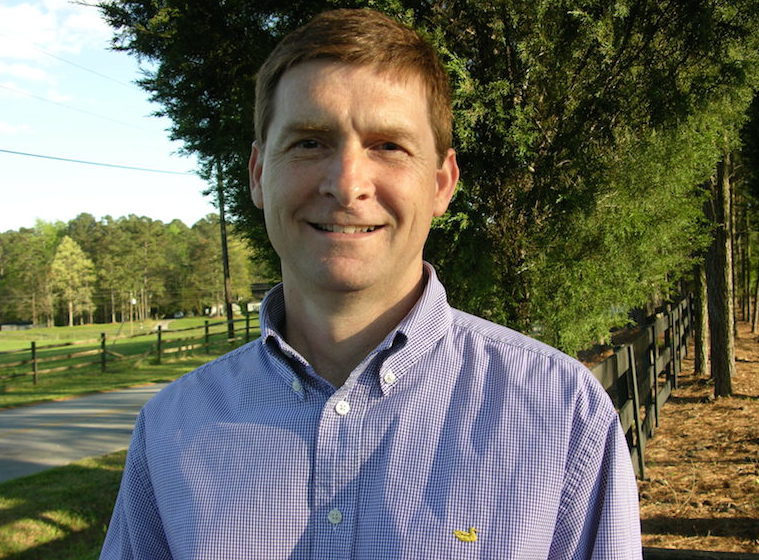From SportsTurf’s July “Q and A” with Dr. Grady Miller of North Carolina State.
Q: We have some winter damage on our bermudagrass fields. For the repair of our newest field, I am going to buy sod from the same sod supplier we used when it built last year. My bigger problem is that I have a couple of old fields with damage and I do not know the cultivar. These fields were grassed before my employment here. I am not sure what would be best to do in trying to match the grass. I have also considered using seed to save some money. I do not have enough funds for a total renovation on these fields, as I will put much of my repair budget into fixing the newest field. Do you have any suggestions?
A: Winter and spring conditions resulted in some significant damage in the Carolinas. This year may go down as one of the “wackier” years in terms of winter injury. It seems there were significant areas in South Carolina that sustained more winter damage than some areas of North Carolina. In some cases coastal areas had more damage than inland areas. And perhaps craziest of all, some of the newer bermudagrass cultivars that are known to be more winter hardy than older cultivars sustained more damage than the less winter hardy cultivars (growing in close proximity to each other).
If you are reading this rather than living it, you may be asking yourself how these outcomes were possible. In a textbook example of winterkill, all those outcomes would be reversed. The response can only be understood by looking back at the weather patterns. In November and December 2017 most of the Carolinas had fairly normal temperatures. January then brought some really cold temperatures, with NC setting records for daily highs below freezing and lows in the single digits. These low temperatures for long durations caused problems with less freeze tolerant turfgrasses, especially those previously stressed from traffic, moisture, shade, etc. These conditions would have resulted in a “normal response.”
Then unusually warm temperatures in mid- and late February and early March caused some green-up in some of the more freeze tolerant turfgrasses. These deacclimated grasses were then more susceptible to a strong cold spell (low 20s) that arrived in mid-March. Many of the less freeze tolerant grasses did not green up in February, so they were not deacclimated and did not suffer as much damage from the March cold spell. So that is why some of the warmer regions of the Carolinas and some of the more cold tolerant grasses actually experienced more severe damage.
This brings us to your three issues. First, matching cultivars to existing grass. Second, ways to establish the grass given that situation. Third, what grass should I use?
I do believe that matching grass cultivars on a field will provide the best visual appearance. The grasses will have the same color and texture when growing, plus they will usually go dormant and green up at the same time. Matching to unknown cultivars is a bit tricky. Genetic testing is one option, but I still do not consider that to be a very practical option.
My advice is to use the current field as the source material if possible. This means either taking plugs out of the existing field and transplanting or using the fields to harvest sprigs and then using that material to plant the problem areas. Using plugs is only practical if the damaged areas are relatively small or if there are some significant non-play areas that can serve as a source of plugs. To harvest sprigs, a commercial sprig harvester or fraze mower would be needed. To some extent this will result in a field renovation and re-establishment process. The turf manager can rake out the large dead areas of turfgrass and just sprig those prepped locations. Once the turfgrass sprigs are grown in, the field should look uniform.
As an alternative, a turfgrass manager can pick a cultivar that they think looks the same as their grass and sprig or sod the damaged area. The results of this guess may work out great, but often the grasses will look or perform differently because of different genetics. One situation where this may work is if the field has a weak common bermudagrass stand. Assuming the turf manager wants to go back with a common bermudagrass, they can heavily verticut the remaining turfgrass and the dead material and then seed an improved, aggressive bermudagrass cultivar into this semi-prepared seedbed. The hope is that the improved bermudagrass will become the dominant grass over the entire surface.
I generally do not recommend seeding bermudagrass into an existing stand of hybrid bermudagrass. Most hybrid bermudagrasses retain enough density when healthy that they do not allow seeded bermudagrass plants to intermingle. So a patchy looking stand of turfgrass is the most common result. My suggestion is to be all seeded or all hybrid within one field.
To me the best grass to use in a renovation is the one you already have, up to when you want to totally change to a new grass. I believe our climatic conditions this year disadvantaged some really great grasses, but that the response to this one year is not a sufficient reason to change grasses—unless you already wanted to change grasses.


